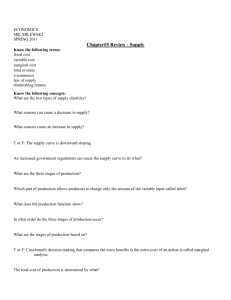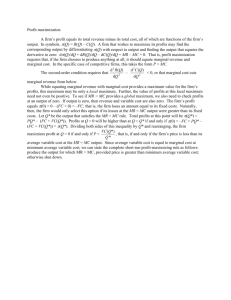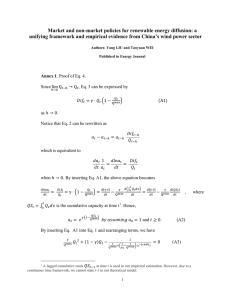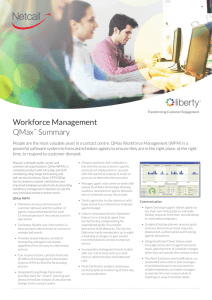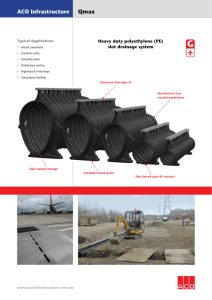Profit - Eastbourne College Portal
advertisement
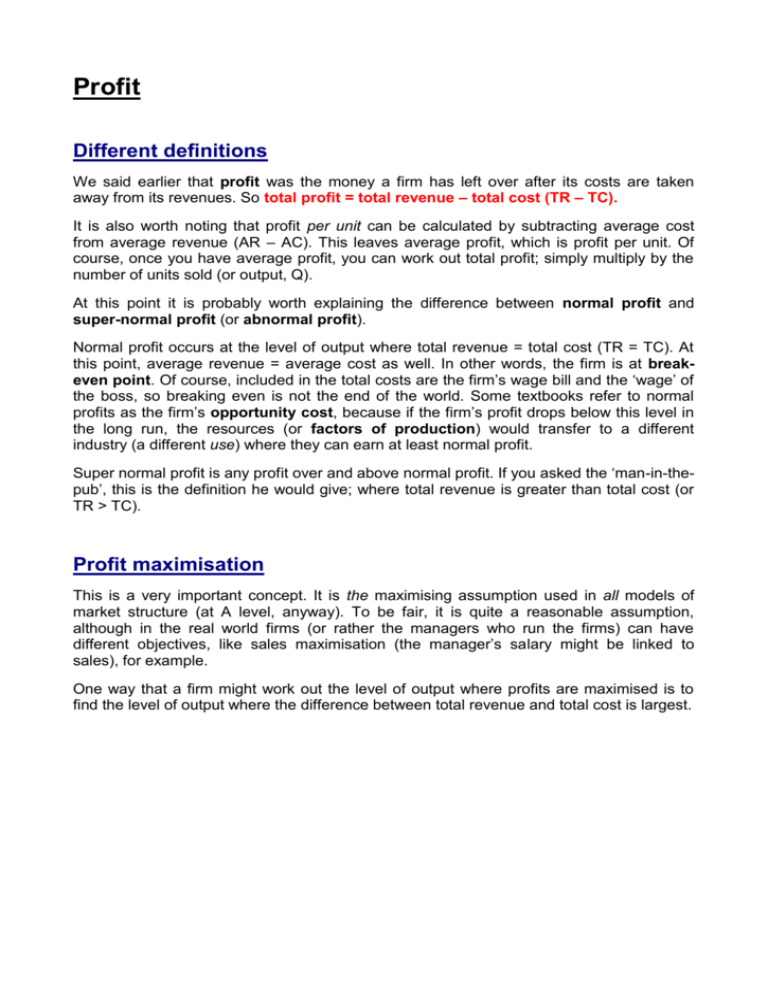
Profit Different definitions We said earlier that profit was the money a firm has left over after its costs are taken away from its revenues. So total profit = total revenue – total cost (TR – TC). It is also worth noting that profit per unit can be calculated by subtracting average cost from average revenue (AR – AC). This leaves average profit, which is profit per unit. Of course, once you have average profit, you can work out total profit; simply multiply by the number of units sold (or output, Q). At this point it is probably worth explaining the difference between normal profit and super-normal profit (or abnormal profit). Normal profit occurs at the level of output where total revenue = total cost (TR = TC). At this point, average revenue = average cost as well. In other words, the firm is at breakeven point. Of course, included in the total costs are the firm’s wage bill and the ‘wage’ of the boss, so breaking even is not the end of the world. Some textbooks refer to normal profits as the firm’s opportunity cost, because if the firm’s profit drops below this level in the long run, the resources (or factors of production) would transfer to a different industry (a different use) where they can earn at least normal profit. Super normal profit is any profit over and above normal profit. If you asked the ‘man-in-thepub’, this is the definition he would give; where total revenue is greater than total cost (or TR > TC). Profit maximisation This is a very important concept. It is the maximising assumption used in all models of market structure (at A level, anyway). To be fair, it is quite a reasonable assumption, although in the real world firms (or rather the managers who run the firms) can have different objectives, like sales maximisation (the manager’s salary might be linked to sales), for example. One way that a firm might work out the level of output where profits are maximised is to find the level of output where the difference between total revenue and total cost is largest. In the diagram above, you see the total revenue curve and the total cost curve on the same axes. As one would expect, given the fixed costs, a firm actually makes a loss at low levels of output. It only starts to make a profit after the level of output rises above Q 1 (which is a break-even level of output). The distance between the total revenue curve and the total cost curve is greatest at Qmax, so this is the profit maximising level of output. Profits fall after this point, reaching another break-even level of output at Q2, after which point the firm is again making a loss, given the acceleration of marginal costs due to diminishing marginal returns. This method of working out the profit maximising level of output makes sense, but relies on trial and error rather a lot. The following method is more precise. Although probably no easier to use for a businessman (especially one who does the books himself), it is vital for the A level economist as it is used to assess the profit maximising level of output in all diagrams associated with market structure. In the diagram above you can see the marginal cost curve (MC) and the marginal revenue curve (MR). Profit maximisation occurs at the level of output where MC = MR. This is one of the most important little formulas to remember in A level economics. So why are profits maximised when this occurs? Let’s think of a level of output below Qmax. At Q3, marginal revenue is greater then marginal cost. This means that the extra revenue gained through the sale of that unit is greater than the cost of making it. The firm is making a profit on that unit. But this does not mean that the firm is maximising total profit. What happens if the firm makes one more unit, taking it to the level of output Q4? Marginal revenue is still greater than marginal cost, so the firm again makes profit on that unit. This will be true for every unit that they produce up to Qmax, so they should make all of these units. At Q5, marginal revenue is less than marginal cost. The firm is making a loss on that unit. This is true of all units made after Qmax. This does not necessarily mean that the firm is making a loss overall (what about all the profit made up to Qmax?), but it does mean that overall profit will be maximised at Qmax. Even if the firm makes just one extra unit, where marginal cost is only a little bit bigger than marginal revenue, the overall profit will fall, however small. The diagram below might help you to understand. Q1 and Q2 are the break-even levels of output. Notice that these are the levels of output where profit = 0 in the top diagram and TR = TC in the middle diagram. Q max is the profit maximising level of output. Notice that this is the level of output where the profit curve is at its highest in the top diagram, the gap between TR and TC is greatest in the middle diagram and MC = MR in the bottom diagram. It is important to understand that, while profits are no longer maximised if production rises above Qmax, total profit is still positive even though it is falling. Just because MC > MR for each unit produced after Qmax, so losses are made on each unit, it does not mean that the firm is making a loss overall. This only happens when the firm’s output rises above Q2.




